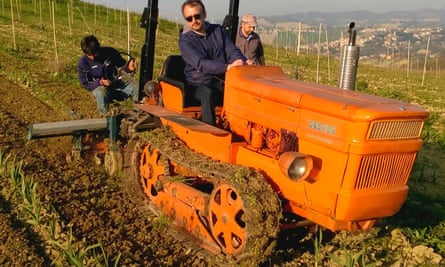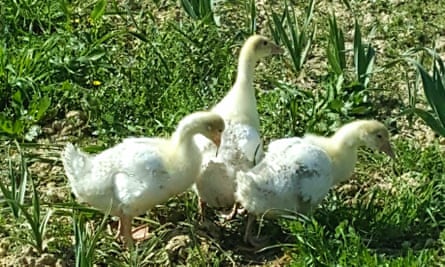Help is on the way for cooks and diners who love the taste of garlic but hold back from eating it for fear it will cause bad breath and indigestion.
An unlikely Roman duo, a construction engineer and a commercial lawyer, have spent the past three years cultivating a special giant variety of garlic that used to be prevalent in Tuscany but has not been produced in large quantities for 40 years. The garlic, known in Italian as aglione, has a milder flavour, is odourless and easy to digest, say the two entrepreneurs, Alessandro Guagni and Lorenzo Bianchi.
With just a few months to go before their harvest, the pair are trying to get their “kissing garlic” in some of Italy’s Michelin-star restaurants after chefs who sampled last year’s crop gave it an enthusiastic response . They hope to sell the aglione in high quality food markets, where they hope it will come to be seen as a newfound Italian gem.
“We thought this was a typical example of Italian excellence that has been forgotten. Why? Because no one knows it and no one asks for it,” said Bianchi.

Garlic is often associated with Italian cuisine, and is considered an important ingredient when cooking roasted potatoes, lamb, roast pork and bruschetta, but it is not a flavour that dominates typical dishes. Guagni and Bianchi say this reflects concern, especially among young people, that it is indigestible and causes bad breath.
They also say that most garlic consumed in Italy is produced abroad, particularly China and Spain.
Their story started about three years ago. Guagni was on holiday in the Chiana valley in Tuscany, in the heart of winemaking country, when he came across a farmer’s stand that was selling a product he had never seen before.
“It was very big. One bulb weighed from 300 to 800 grams, about 10 times as big as normal garlic. The taste was very good and very light so we thought about the possibility of reintroducing it in the market,” Guagni said.
Their first task was to find aglione seeds.
The product is not totally unknown. Some Tuscan restaurants serve a dish known as pici all’algione on their menu, a fresh, eggless pasta with a tomato and garlic sauce. When Guagni and Bianchi started asking restauranteurs about where they found their supplies, however, they hit a wall.
“We asked: ‘Where can we find it’? And they said: ‘No, there isn’t any. You will never find it because it is over. It’s extinct’,” Guagni said.
They learned that though the dish technically calls for aglione, which translates as “big garlic”, most chefs use a conventional variety.
Eventually they tracked down a few local producers , got their hands on some seeds and went to work on land Bianchi owns in the Marche region, near the city of Ancona. They say they have a tractor they “play” on over the weekend, and a friend with experience who is also helping out.
Asked whether their garlic could be considered organic, the two chuckle.

“It couldn’t get more organic,” Bianchi said. Garlic is not too labour intensive, they add, and in this case much of the labour is done by ducks, which eat the weeds on the land but don’t touch the bulbs themselves. They also produce fertiliser.
The pair have grown their garlic on two hectares of land, which they say is enough to cultivate about 30,000 plants.
According to the Fondazione Slow Food, an organisation that promotes food biodiversity, fewer than 10 producers cultivate what it calls aglione della Chiana, and most do so for personal use. The foundation said the variety does not contain allicin, a chemical compound found in traditional garlic, and that there are usually six large cloves in a bulb.
The garlic is said to date back to ancient times, when Etruscans inhabited the Chiana valley, and it was also present on the island of Giglio. It allegedly arrived on the island in 1544 after the pirate Khayr al-Din killed nearly everyone on it, forcing the ruling Medici family of Florence to repopulate it with aglione-loving inhabitants of the Chiana valley, who brought it with them.
Guagni and Bianchi, who have been friends since they were teenagers growing up in Rome, are thinking big, possibly about creating a supplement or soap, given that garlic is known for its anti-bacterial qualities. They also have a few more ancient products they would like to revive, but don’t want to divulge their trade secrets.
They are also having fun. “We wanted to do something to escape from our offices,” Guagni said.

Comments (…)
Sign in or create your Guardian account to join the discussion